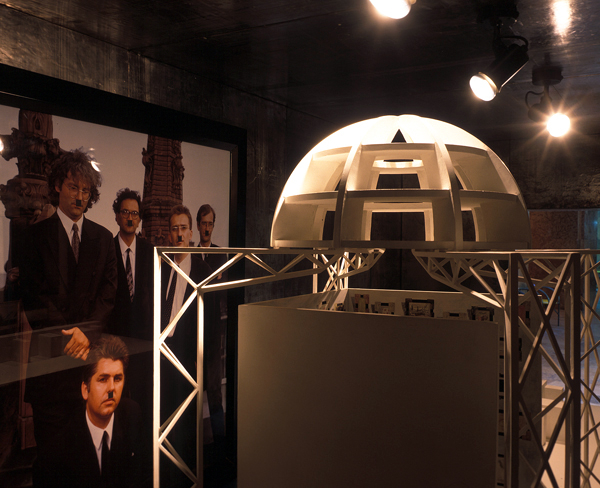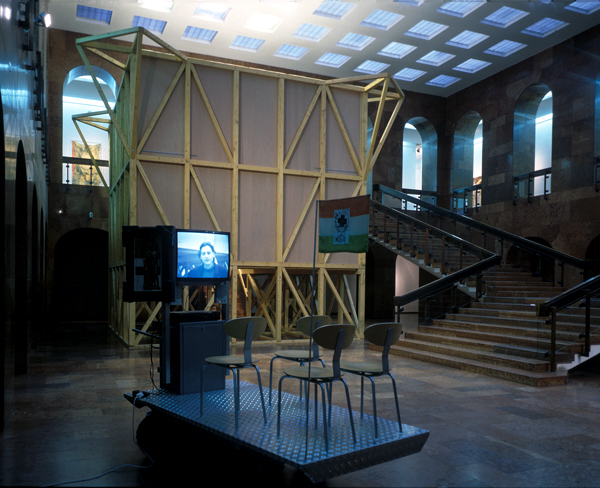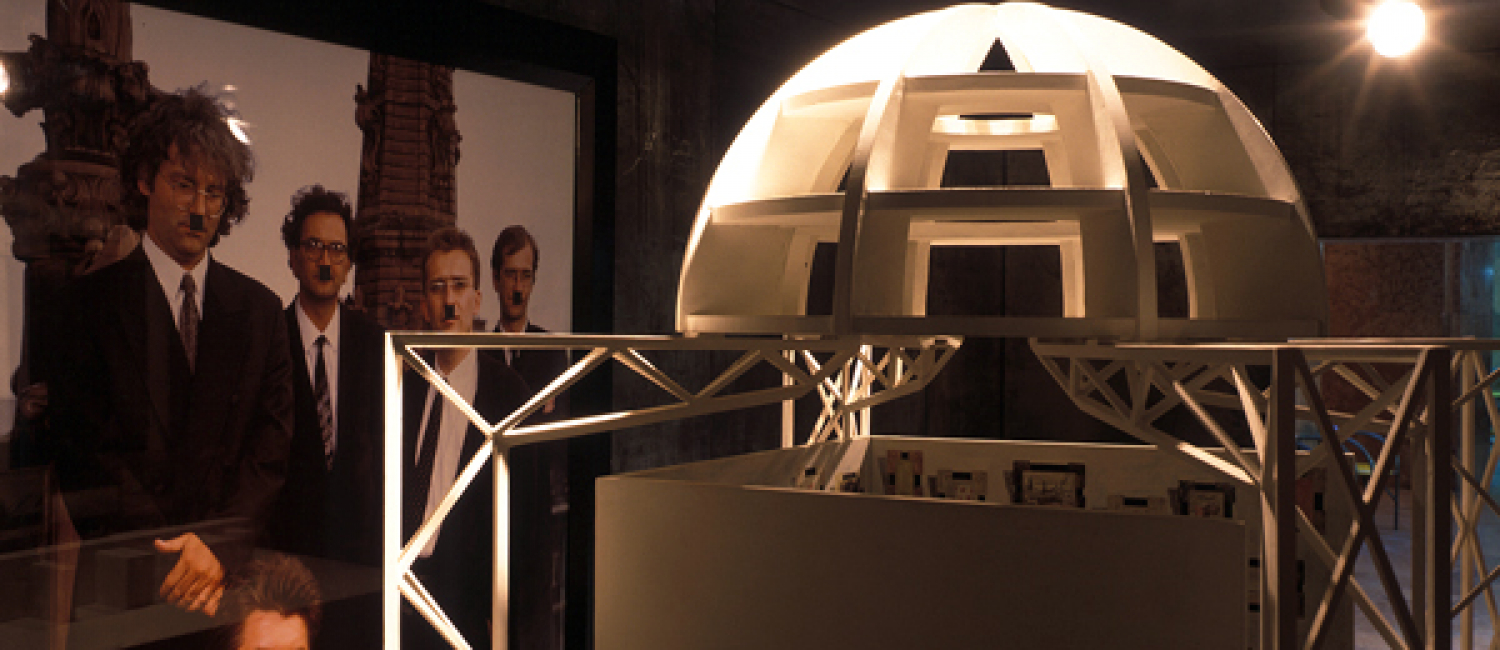I see the show as an aggregate consisting of two units or machines.
A machine, as I understand it here, is a complex of purposefully connected elements which produce something-objects, ideology, beauty, history, whatever.
The first structure is called The Interior of the Planit. The title refers to the suprematistic objects made by Malevich; these objects seem like architectural models, but are, in fact, just forms, they only have the outside. The interior of the planit is the interior of suprematism, of the non-objective. Thus, speaking about the interior of a planit is like speaking about the other side of the black square. In fact, Irwin's (and NSK) position in exactly on the border between the exterior and the interior of the planit. The portrait of the group, made by Andres Serrano, clearly speaks about this position, the black square is nothing but a black square (“nothing' would Malevich maybe say), but once it is placed on the right spot ... well, it shows its other side. Having the outside as well as the inside, the front as well as the back side, this planit represents Irwin and NSK position, it can make visible the structure of the NSK state as “an abstract organism, a suprematist body installed in a real social and political space as a sculpture comprising the concrete body warmth, spirit and work of its members".
The second structure is called The Heart of Transcentrala. Let me quote what the Irwins wrote about the word Transcentrala: “The meeting point for people from Europe who traveled to the New World at the beginning of the 20th century.”
The structure is in fact a kind of museum which houses a collection of the icons from the Irwin's Was ist Kunst series. The series clearly shows the NSK “retro principle' in the appropriation of the imagery used for these Works, this imagery, taken from its original context (which is, nevertheless, still implied in the Works) and connected with other images, produces not only new meanings, but the possibility of a re-interpretation of the original context itself. Thus, behind and beyond their aesthetic effect, Ihese icons can be uncanny and even scandalous. Looking at these paintings, I sometimes think of the famous verse “Beauty is truth, truth beauty", but, what is truth, and what is beauty? Was ist Kunst? The question is asking not only about the nature of art, not only about its possibilities Ilike, “What else can be art?"), it is a paranoid question. Paranoia is an endless possibilily of making new connections and interpretations, an endless possibility for your fears to be true. Which space, then, would be more appropriate for Ihese Works as a room covered with rather dinre mirrors, endlessly multiplying Ihe cube into a kind of landscape, reflecting, repeating and changing all contents? Is Ihis endless, paranoid possibility far connecting and multiplying Ihe images and interpretations the actual source of the transformative power of the Iranscentrala? The artists also speak about “an intermedlatlng funcfion between Ihe private (personal) and the collective'; I believe thai this process can be understood as pertectly parallel to Ihe paranoid transformations of any elemem as it enters Ihe Was isf Kunsf? accelerator.
The group Irwin was founded in 1983. Its members are Dusan Mandic (born in Ljubljana, 1954), Miran Mohar (NOVO mesto. 1958), Andrej Savski (Ljubljana, 1961), Roman Uranjek (Trbovlje, 1961) and BorutVOgelnik(Kranj, 1959).


